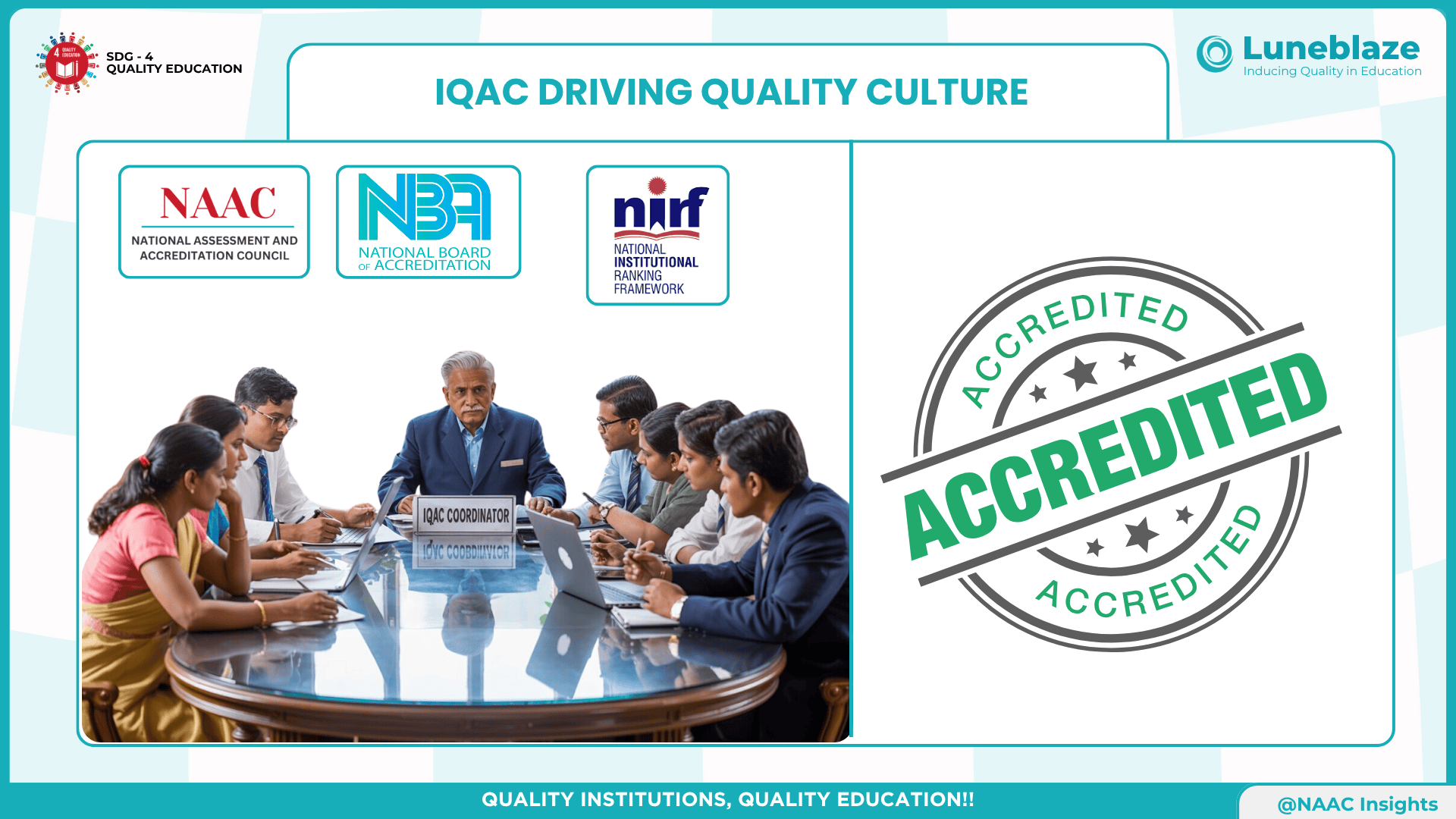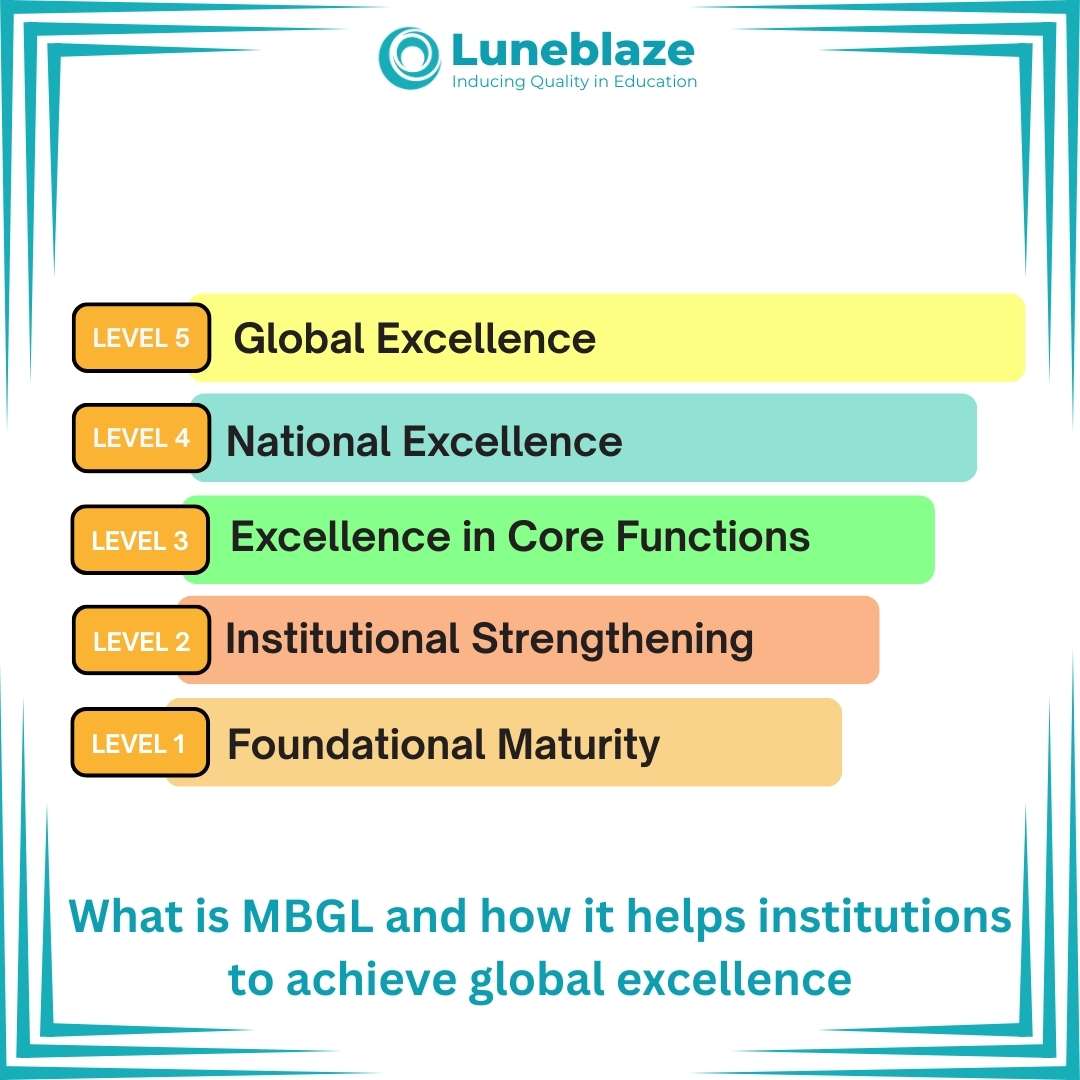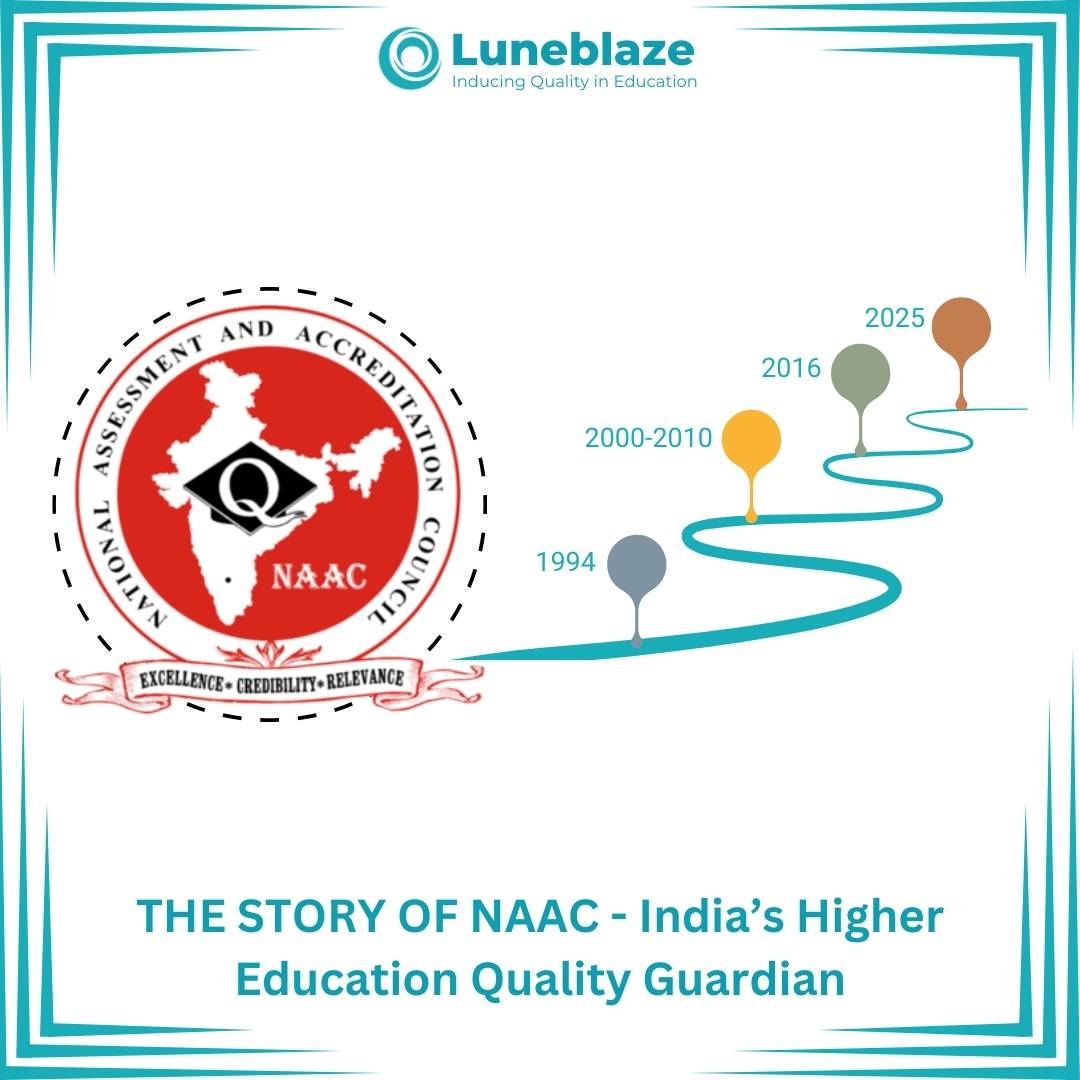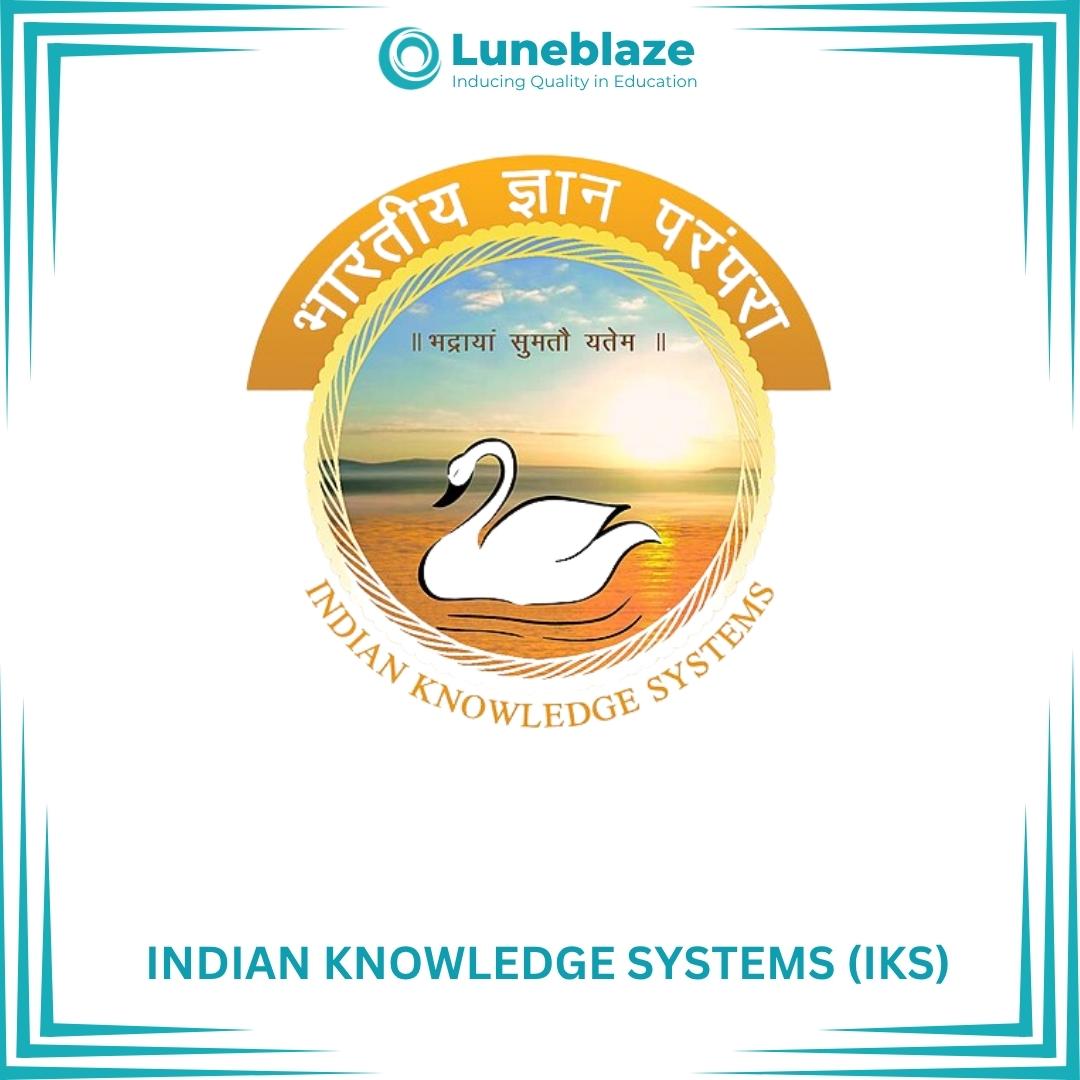Understanding IQAC in the NAAC Ecosystem

Oct 03, 2025
Picture walking into a Higher Education Institution (HEI) where every decision reflects a commitment to excellence. Classrooms hum with innovative pedagogy, administrative corridors are powered by data-driven transparency, and students, alumni, and faculty collaborate not only in academics but also in building institutional greatness. This is not an idealistic dream—it is the vision realized through the Internal Quality Assurance Cell (IQAC) in HEIs across India.
The IQAC forms the cornerstone of institutional self-improvement. It enables HEIs to thrive through structured introspection, community participation, and outcome-driven strategies.
The IQAC is not a routine administrative cell. It is a dynamic, participative system designed to nurture a quality culture through continual, collaborative enhancement.
IQAC helps HEIs:
Institutionalize evidence-based quality assurance.
Promote systematic improvement across academics and administration.
Ensure smooth progression across NAAC accreditation cycles.
The Role of IQAC in Higher Education Transformation
A well-functioning IQAC brings:
Strategic quality enhancement: Developing benchmarks, enabling learner-centric pedagogy, ensuring affordability, and conducting Academic and Administrative Audits (AAA).
Participative governance: Involving diverse stakeholders to ensure balanced perspectives in institutional functioning.
Transparency and documentation: Uploading meeting minutes, action reports, and accreditation certificates for public access.
Who Can Be Part of the IQAC Team?
The strength of IQAC lies in its composition. NAAC guidelines recommend a broad and inclusive team, ensuring representation from every corner of institutional life. Typically, the IQAC includes:
Head of the Institution: Principal or Vice-Chancellor, serving as Chairperson.
Senior Faculty Members: Bringing academic expertise and mentoring quality initiatives.
Administrative Officers: From finance, examinations, admissions, and governance.
Student Representatives: Ensuring student-centric perspectives.
Alumni Representatives: Adding real-world insights and strengthening outreach.
Employers/Industry Experts: Aligning academics with professional expectations.
Community Stakeholders: Reflecting social responsibility and community integration.
This inclusive composition ensures a 360-degree view of institutional functioning where decisions reflect the expectations of multiple stakeholders.
Functions and Responsibilities of IQAC
The IQAC is entrusted with wide-ranging responsibilities that impact every aspect of an HEI’s ecosystem:
Academic quality: Developing and applying benchmarks, promoting innovative pedagogy, encouraging faculty development, and integrating digital learning methods.
Governance and leadership: Creating participative decision-making platforms, coordinating academic and administrative audits, and strengthening accountability.
Stakeholder engagement: Collecting and analyzing feedback from students, parents, alumni, and employers to guide improvements.
Documentation and reporting: Recording best practices, preparing the Annual Quality Assurance Report (AQAR), and ensuring public access.
Research and innovation support: Encouraging collaborations, extension activities, and institutional distinctiveness.
Accreditation readiness: Acting as the nodal agency for NAAC processes and ensuring compliance with quality norms.
Benefits of a Strong IQAC
Informed decision-making with quality data.
Cross-sectoral synergy connecting academics, research, and outreach.
Sustainability and scalability of best practices.
Empowered stakeholders through shared ownership.
Challenges on the Road
HEIs often struggle with tokenism, understaffing, weak participation, or poor digital infrastructure. With leadership support and capacity building, these barriers can be overcome.
Success Models
Several HEIs have adopted IQAC practices in visible and impactful ways:
Christ University (Bangalore): Established IQAC in 2003 with a structured framework for quality benchmarks, stakeholder feedback, and continuous improvement.Source
St. Xavier’s College (Mumbai): Ensures transparency by publishing minutes, reports, best practices, and feedback.Source
Fergusson College (Pune): Publishes AQARs and documents measurable initiatives and outcomes year after year.Source
These examples show that when IQAC is implemented with seriousness, it creates lasting systems of quality enhancement and transparency.
The Way Forward
HEIs can maximize IQAC’s potential by embedding it into daily governance, investing in trained coordinators and MIS systems, strengthening feedback loops, aligning findings with strategic planning, and celebrating quality outcomes.
Conclusion
IQAC is not just a compliance tool. It is a transformative instrument that sustains excellence and prepares HEIs for the evolving accreditation ecosystem. As India moves toward binary accreditation and NEP 2020 reforms, HEIs that invest in IQAC today will lead tomorrow’s higher education landscape.
Looking to strenghten your IQAC and stay accreditation-ready?
Luneblaze offers AI-powered solutions for NAAC documentation, progress tracking and automated evidence generation fully aligned with all 10 attributes.
Book a free DEMO today and see how Luneblaze can streamline your instituion's Accreditation Journey.
Trusted by
100+
Institutions
worldwide
since 2017
Get started with Accreditation Excellence
Explore how our AI-enabled accreditation solution simplifies the accreditation journey










